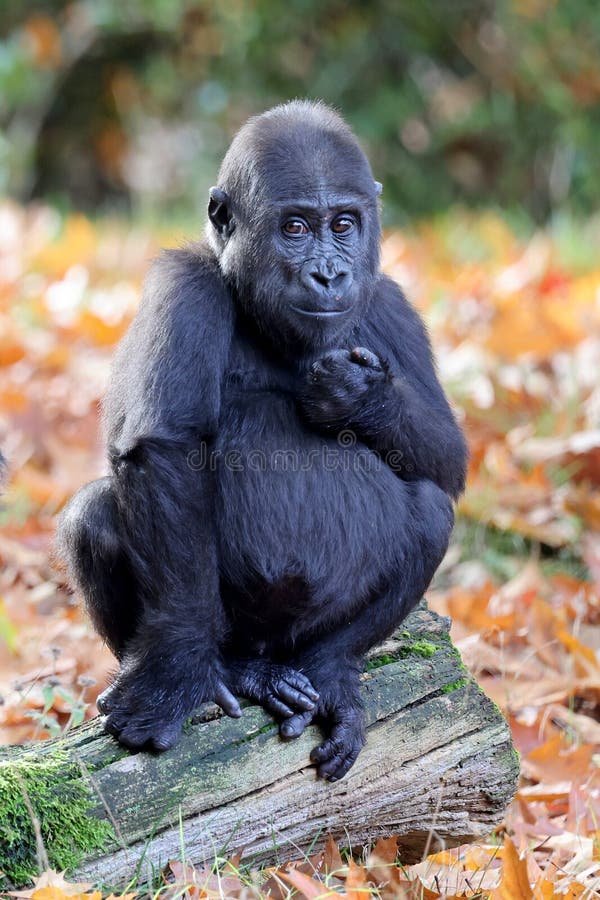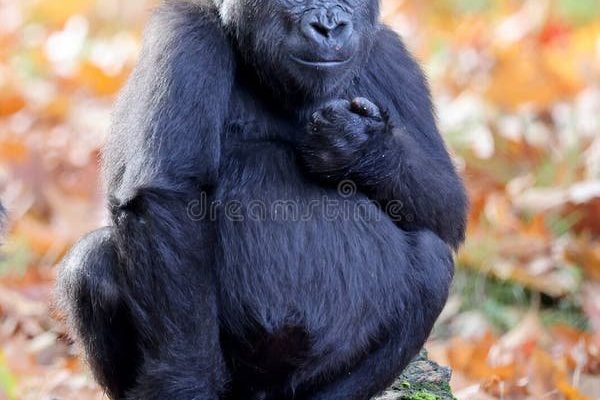
These gentle giants are not only vital for the health of their habitat, but they also help maintain the balance of the forest. Imagine a bustling marketplace where every vendor plays a specific role in keeping things running smoothly; that’s the Western Gorilla in the heart of the tropical forests of West and Central Africa. Let’s dive deeper into their roles and understand just how important they are to their ecosystem.
1. Habitat of the Western Gorilla
The Western Gorilla primarily resides in dense, tropical rainforests across Central and Western Africa. These areas are rich in biodiversity, home to various plants and animals. Think of the forest as a vibrant tapestry woven with countless threads, each representing a different species. The Western Gorilla calls this lush environment home, mainly inhabiting lowland and swamp forests.
Their strong relationship with these ecosystems begins with the trees. Gorillas are known for their ability to travel between the forest’s floor and canopy. They often feed on leaves, stems, and fruit, which means they play a significant role in the health of their habitat. By eating certain plants, they help with the natural cycle of growth and decay, ensuring that the forest remains rich and vibrant for future generations.
2. Seed Dispersal: The Nature’s Gardeners
One of the most important contributions of the Western Gorilla to its ecosystem is seed dispersal. As these animals consume fruit, they inadvertently help in the growth of new plants. Here’s the thing: animals like gorillas are not just munching on fruit for fun; their digestive systems help break down the seeds and spread them across vast distances as they move around.
This process is crucial for forest regeneration. For example, if you imagine a giant fruit falling from a tree and being eaten by a gorilla, the seeds then pass through the gorilla’s system and get deposited far away, sometimes even miles from the parent tree! This method of dispersal encourages genetic diversity among plants and allows forests to flourish in new areas, adapting to changing conditions over time.
3. Impact on Vegetation
You might wonder how Western Gorillas influence the vegetation around them. It’s pretty fascinating, actually. By feeding on certain plants, they can control which species thrive in their environment. This is similar to how a gardener might prune their plants to promote healthy growth.
When gorillas eat certain leaves or branches, they prevent those species from overtaking the area. This creates space for other plants and trees to grow, allowing a wide variety of species to coexist. In essence, they act as natural landscape managers, ensuring that the forest remains a balanced and diverse ecosystem.
4. The Role in the Food Chain
Western Gorillas sit comfortably somewhere in the middle of the food chain. While they are primarily herbivorous, they aren’t entirely without predators. The presence of gorillas helps maintain balance in their ecosystem, providing food for larger carnivores. In a way, they are like the stepping stones that support the entire ecosystem.
Here’s a fun fact: when gorillas interact with their environment, they also indirectly support smaller animals. You see, while these gentle giants munch on leaves and fruits, they might also stir up insects or small creatures hiding in the underbrush. These small animals then become food for other predators, like birds or snakes, creating a web of life that supports many species.
5. Social Structure and Community Impact
Western Gorillas are known for their tight-knit social groups, called troops. These communities provide support and protection for their members. This social structure is essential not just for the gorillas themselves but also for the overall health of their ecosystem.
By living in groups, they can effectively share resources and interact with their environment more efficiently. Think about it: when they travel together, they browse through more plants and distribute seeds more effectively. The interaction among various gorilla groups also ensures genetic diversity, which is crucial for the population’s long-term survival.
6. Conservation Challenges
Despite their importance in the ecosystem, Western Gorillas face significant threats. Habitat destruction, poaching, and diseases like Ebola pose serious risks to their populations. It’s like trying to maintain a robust community garden while the neighborhood is being developed into a shopping mall; something has to give.
Conservation efforts are crucial, as protecting gorillas means protecting their environment. Various organizations are working to create safe spaces for them, similar to a sanctuary where each species can thrive without worrying about outside threats. Supporting these initiatives is vital for ensuring that Western Gorillas continue to play their significant role in the ecosystem.
7. The Big Picture: Why It Matters
So, why should we care about the role of Western Gorillas in their ecosystem? Well, their existence has far-reaching implications for the health of entire forests and, by extension, global biodiversity. Healthy forests provide oxygen, store carbon, and regulate our climate, acting like the lungs of our planet.
When we consider gorillas as integral parts of this ecological puzzle, it becomes clear that their survival directly impacts our environment. Protecting them isn’t just an animal rights issue; it’s a pressing matter for the health of our planet.
In closing, the Western Gorilla isn’t just another animal in the jungle; it’s a foundational element of its ecosystem. From seed dispersal to managing vegetation and supporting community dynamics, these magnificent creatures are key players in maintaining the health of their habitats. If we want to keep our planet thriving, we can’t ignore the vital role these gentle giants play. After all, a healthy ecosystem benefits us all.

